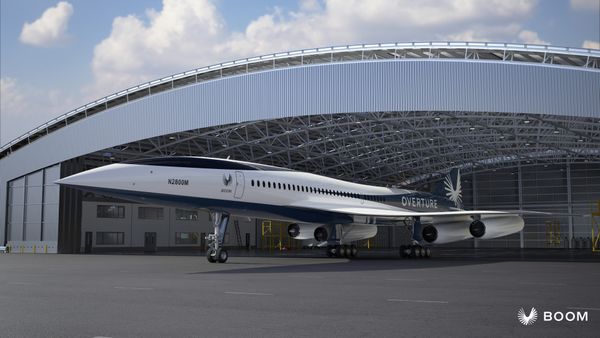Electric green taxiing systems (EGTS) have emerged as a beacon of hope for reducing fuel consumption and emissions in the aviation industry. The idea is simple, use electric motors in the wheels to taxi airplanes instead of relying on the fuel guzzling main engines.
Despite many successful demonstrations, widespread adoption of EGTS has yet to take off. Why?

The Economic Hurdle
While the environmental benefits that EGTS provides are absolute, airlines are still businesses, and cost plays a major role in their decision making. Installing an EGTS system adds significant weight to the aircraft. This extra weight translates to carrying less fuel, cargo or passengers, which negates some of the fuel savings seen with EGTS during taxiing on the ground. This is especially the case for longer flights.
Furthermore, the upfront cost of purchasing and installing an EGTS system can be quite substantial. Airlines, particularly budget carriers, are often hesitant to invest in new technologies without a clear and immediate return on investment. While some companies propose leasing models to address this, widespread adoption requires a compelling economic case.
Balancing Efficiency
There are two main approaches to EGTS design: systems powering the nose wheel of an aircraft, and systems that power the main landing gear.
Nosewheel-based systems are simpler to install, but have limitations. The turning radius of wheels equipped with EGTS are restricted by the maximum steering angle. This means that undergoing tight maneuvering on busy airport grounds will be challenging, especially for larger aircraft.

Main landing gear-based systems offer better maneuverability for aircraft, but require more complex engineering and integration with the existing landing gear systems. This adds to the cost and development time of such systems.
Another factor to consider is the evolution of aircraft themselves. Modern airplanes, particularly single-aisle models like the Airbus A320, are becoming increasingly fuel-efficient.
This reduces the overall benefit of EGTS on newer aircraft types. Additionally, the trend towards longer-range, single-aisle aircraft further diminishes the appeal of EGTS, as the weight of such a system is of higher significance on longer flights.
This does not mean EGTS cannot find a niche in the aviation market. Older, less fuel-efficient aircraft could benefit more from electric taxiing due to their (relative) inefficiency. Additionally, airports with significant taxi times due to congestion could see a greater reduction in fuel burn and emissions with widespread EGTS adoption.
The Future of Electric Taxiing
The future of ETS likely lies in its integration with the next generation of aircraft. Designing these systems as part of the overall aircraft architecture from the beginning could address weight and cost concerns. Additionally, advancements in battery technology could offer lighter and more powerful options for powering the electric motors of an EGTS system.
Furthermore, as environmental regulations tighten and the pressure to reduce emissions intensifies, the economic argument for EGTS could become more compelling.
Collaboration between airlines, manufacturers, and regulatory bodies will be crucial in pushing this technology forward.
Electric taxiing systems offer a promising solution for reducing fuel consumption and emissions during aircraft ground operations. However, the economic realities, technical limitations, and evolution of aircraft design have hindered the widespread adoption of EGTS systems.
Nevertheless, EGTS could still find a niche in the widespread aviation market and potentially become a stepping stone towards more advanced electric or hybrid propulsion systems for future aircraft.
The path forward will likely involve technological advancements, a shift in economic considerations, and a collaborative effort from various major stakeholders in the aviation industry.
Emirates Orders 65 Additional Boeing 777-9 at Dubai Airshow 2025 » Buraq Air Expands Fleet with New Airbus A320neo Aircraft Order » LOT Polish Airlines Announces New Route to San Francisco »
Comments (7)
 Rick
What’s wrong with using the tugs that push the aircraft back? The driver would be in constant contact with ground control or the aircraft and the flight crew would start engines when advised by ground. At that point the tug would disconnect and return to the gate
Rick
What’s wrong with using the tugs that push the aircraft back? The driver would be in constant contact with ground control or the aircraft and the flight crew would start engines when advised by ground. At that point the tug would disconnect and return to the gate
 JB
I had the same thought as Rick; why not have electric tractors tow the planes during taxi from the gate? They would then park and recharge as needed throughout the day. Flight crew would be surrendering some responsibility for the aircraft during this time, which might be a challenging paradigm shift.
JB
I had the same thought as Rick; why not have electric tractors tow the planes during taxi from the gate? They would then park and recharge as needed throughout the day. Flight crew would be surrendering some responsibility for the aircraft during this time, which might be a challenging paradigm shift.
 Bob
Can’t you tow them with a Tesla? <sarcasim>
Bob
Can’t you tow them with a Tesla? <sarcasim>
 Daniel Lewis
Daniel Lewis
 Outstanding answer
Outstanding answer
 Franco Grobler (author)
Good Comment, lol.
Franco Grobler (author)
Good Comment, lol.
 Lorenzo
The main issue (Passengers and the money they spend on tickets) must remain in mind when talking about E-Taxi. Reduced fuel burn or tractors/tugs are not enough to ameliorate the main issue. Time is the reason why people fly, otherwise they would use cars/boats. An electric wheel taxi would save min. 5 min x 2 per flight, (sometimes hours can be saved when there is a tug breakdown) Multiply x no. of flights daily x no. of aircrafts per fleet and you will quickly find out that those $100m you 'capexed' for another 737 this year is saved! The other advantages such as reduced carbon tax, reduced engine use/maintenance, reduced FOD (Foreign object damage), fuel savings, competitivity, etc.., pile up to make e taxi a no-brainer. Look at ---> https://www.wheeltug.com/
Lorenzo
The main issue (Passengers and the money they spend on tickets) must remain in mind when talking about E-Taxi. Reduced fuel burn or tractors/tugs are not enough to ameliorate the main issue. Time is the reason why people fly, otherwise they would use cars/boats. An electric wheel taxi would save min. 5 min x 2 per flight, (sometimes hours can be saved when there is a tug breakdown) Multiply x no. of flights daily x no. of aircrafts per fleet and you will quickly find out that those $100m you 'capexed' for another 737 this year is saved! The other advantages such as reduced carbon tax, reduced engine use/maintenance, reduced FOD (Foreign object damage), fuel savings, competitivity, etc.., pile up to make e taxi a no-brainer. Look at ---> https://www.wheeltug.com/
Add Your Comment
SHARE
TAGS
INFORMATIONAL EGTSElectric Green Taxiing SystemSustainabilityEmissions green flying climate changeRECENTLY PUBLISHED
 Buraq Air Expands Fleet with New Airbus A320neo Aircraft Order
Buraq Air has made a significant commitment to expanding its fleet with an order for 10 Airbus A320neo aircraft, reflecting its focus on modernization and sustainability in the aviation sector.
NEWS
READ MORE »
Buraq Air Expands Fleet with New Airbus A320neo Aircraft Order
Buraq Air has made a significant commitment to expanding its fleet with an order for 10 Airbus A320neo aircraft, reflecting its focus on modernization and sustainability in the aviation sector.
NEWS
READ MORE »
 Emirates Orders 65 Additional Boeing 777-9 at Dubai Airshow 2025
Emirates has announced an order for an additional 65 Boeing 777-9X aircraft today at the Dubai Airshow. This deal, valued at USD $38 billion, brings the airline's total 777-9X order count to 270 units. The agreement also includes options to convert orders 777-8 or 777-10 variants.
NEWS
READ MORE »
Emirates Orders 65 Additional Boeing 777-9 at Dubai Airshow 2025
Emirates has announced an order for an additional 65 Boeing 777-9X aircraft today at the Dubai Airshow. This deal, valued at USD $38 billion, brings the airline's total 777-9X order count to 270 units. The agreement also includes options to convert orders 777-8 or 777-10 variants.
NEWS
READ MORE »
 The Hidden Pilot Problem That Could Make or Break Boom's Supersonic Jet
AeroXplorer recently spoke with Tristan Brandenburg, Boom Supersonic's Chief Test Pilot. In conversation, it became evident that in the months leading up to Overture's rollout, one of Boom's most complex challenges might not be in the wind tunnel, but in the cockpit.
STORIES
READ MORE »
The Hidden Pilot Problem That Could Make or Break Boom's Supersonic Jet
AeroXplorer recently spoke with Tristan Brandenburg, Boom Supersonic's Chief Test Pilot. In conversation, it became evident that in the months leading up to Overture's rollout, one of Boom's most complex challenges might not be in the wind tunnel, but in the cockpit.
STORIES
READ MORE »


